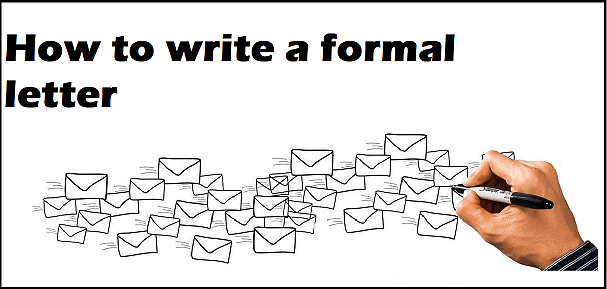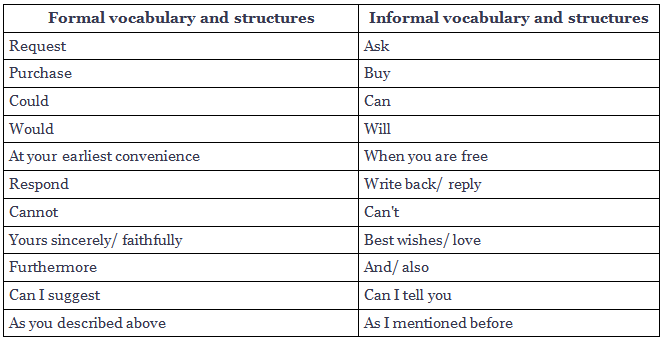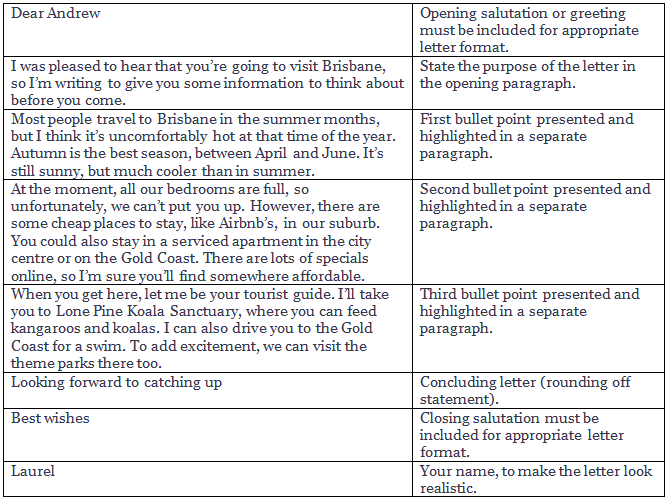Writing Task 1: How to write a Formal letter | Writing for General Training IELTS PDF Download
State the purpose
Start your letter by clearly stating why you are writing, the purpose. The reason for writing your letter needs to be clearly presented in the opening paragraph. Make sure the purpose of the letter is in direct response to the situation outlined in the question.
Example opening paragraphs with a clear purpose presented:
Common IELTS General Training, Writing Task 1 situations may include:

Use the right tone
Let’s move on to the next feature in your letter that the examiner is looking for, the tone of your letter. The tone refers to the way in which you write the letter, formal or informal style. The instructions in the question will give you a clue.Begin your letter as follows:

A formal letter contains:
- Longer sentences that use passive language (be + past participle)
- Modals (e.g. The broken light needs to be fixed to ensure that the customers who use this facility have adequate visibility of their surroundings.)
An informal letter is:
- Conversational
- Can include contractions (e.g. can’t) and more direct speech (e.g. Can you fix the light in the kitchen, so I don’t have an accident?)
The table shows some examples of formal and informal vocabulary and structures that you can use in your IELTS General Training Writing Task 1 response:
And finally, remember that the greeting and the closing salutation of an IELTS General Training, Writing Task 1 letter needs to match the style. For example:
Dear Sir/Madam ----------> Yours faithfully
Dear John ----------> Best wishes
Include bullet points presented in the question
When writing a letter as part of the IELTS General Training Writing Task 1, it is important to include the bullet points presented to you in the question.The question in IELTS General Training Writing Task 1 will present you with:
- A situation
- Who to write the letter to
- What you must include in the letter (the bullet points).
All three bullet points need to be presented. And remember that some bullet points contain more than one element. So, make sure to watch for ‘and’ and plurals.
Let’s break down the following question.
An overseas friend wants to visit your country on holiday.
Write a letter to your friend. In your letter
- Recommend the best time of year to visit and why
- Describe the types of accommodation your friend could choose
- Say what you would like to show your friend in your country
Write at least 150 words.
You do NOT need to write any addresses.
Begin your letter as follows:
Dear…
Look at the first bullet point and you will see it contains two elements. So, make sure you present both:
- The best time of the year to visit
- Why it is the best time to visit
Look at the second bullet point and you will see you will that you have to describe ‘types’ of accommodation. So, remember to watch for plurals.
- First type of accommodation
- Second type of accommodation
Example for the first bullet point, covering both elements (when and why):
Most people visit Brisbane in the summer months, but I think it’s far too hot then. The best time to visit is between April and June, our autumn season. It’s still sunny, but much cooler and not as humid as the summer.
Structure your letter
The final feature to look at in IELTS General Training, Writing Task 1 is the format of your letter. A letter needs to be written using a proper format, including the following:- A greeting (Dear sir/madam, Dear John, Dear Mr. Smith)
- The main body (consisting of paragraphs for each part of the letter)
- A closing (Yours sincerely, Yours faithfully, Best wishes, Kind regards, Love).
In the instructions you are told - You do NOT need to write any addresses – so do not include them.
This is an example of an informal letter:
Remember, to reach a higher band score for IELTS General Training Writing Task 1, - task achievement, you need to include each of these features in your letter.
- A clear purpose
- Appropriate tone
- Present and highlight all the bullet points
- Appropriate format
|
36 videos|155 docs
|
FAQs on Writing Task 1: How to write a Formal letter - Writing for General Training IELTS
| 1. How do I format a formal letter for the IELTS exam? |  |
| 2. What are the essential elements to include in a formal letter for the IELTS exam? |  |
| 3. How can I improve my formal letter writing skills for the IELTS exam? |  |
| 4. Is it necessary to use complex vocabulary and sentence structures in a formal letter for the IELTS exam? |  |
| 5. Can I use contractions in a formal letter for the IELTS exam? |  |

|
Explore Courses for IELTS exam
|

|

















